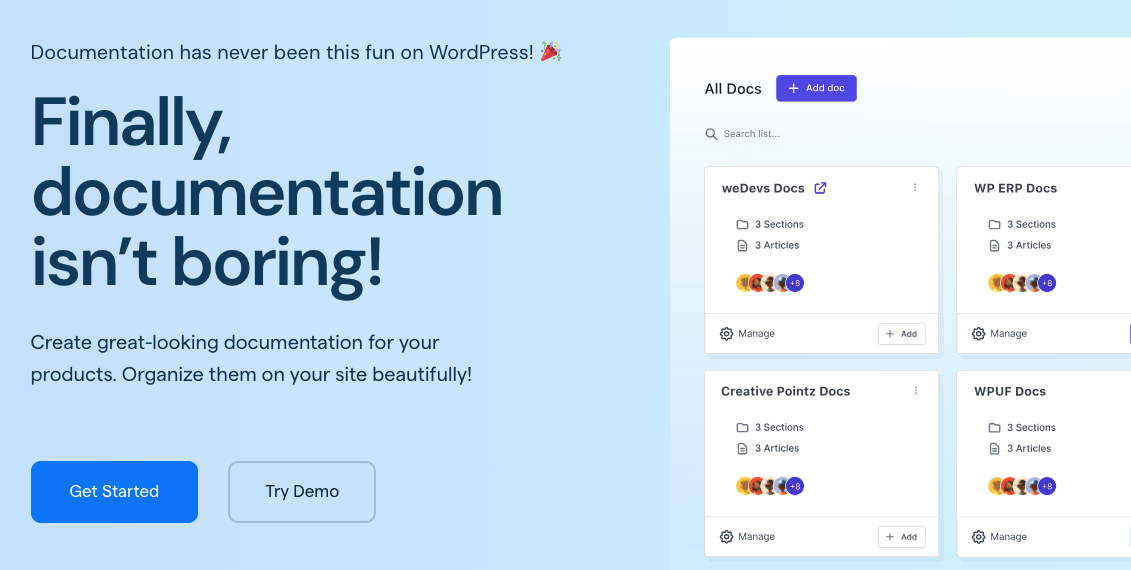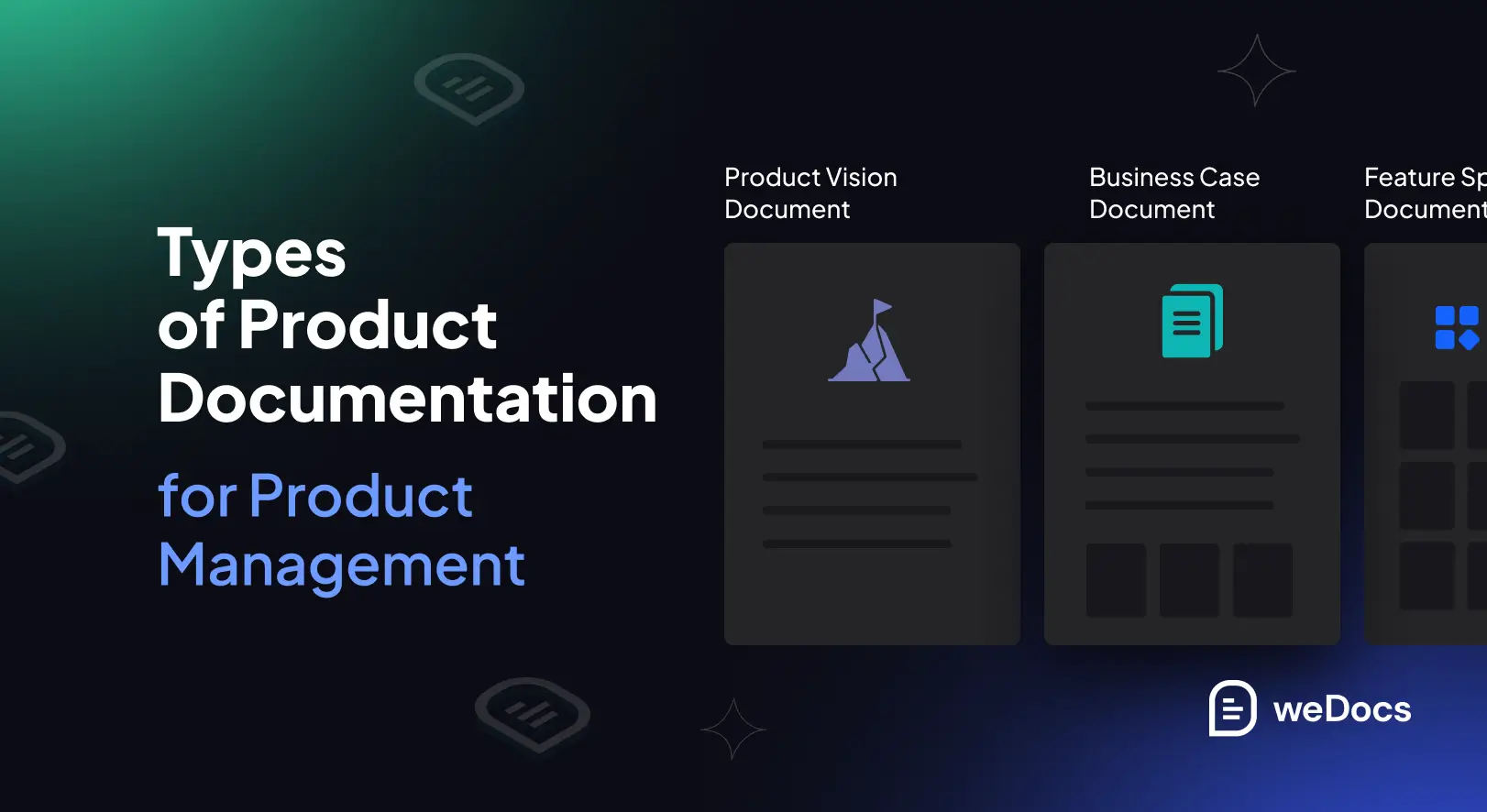Collaboration and clear communication are a must for the success of any product development process. Otherwise, a single misunderstanding can easily derail your dream project. Product documentation plays a crucial role in upholding and facilitating this communication.
It serves as a comprehensive resource, offering DIY guides and solutions by which new and existing team members can instantly adapt to the product development process step by step. This enables team members to stay on the same page. However, different types of product documentation are used in product management.
Whether you are a product developer or technical documentation writer, you must have a clear idea of all these types. In this article, we’ll cover in detail the different types of product documentation used in product management.
What Is Product Documentation?
Product documentation refers to the knowledge that covers detailed information about a product, including its functionalities, features, and usage guidelines. It serves as a vital resource both for internal and external users.
For the internal team, product documentation covers technical specifications, roadmaps, project management notes, wireframing, mockups, etc. And for customers, it includes user manuals, release notes, how-to guides, and FAQs.
However, whenever we hear the term ‘product documentation,’ we usually think of it as intended for internal users. So, in the following parts of this article, we’ll cover the types of product documentation for internal users (developers).
For example, you can look at this link to see how weDevs manages its product documentation.
Types of Product Documentation for Product Management
If you plan to be a technical documentation writer, look at the most popular types of product documentation used in product management in the write-up below.
1. Product Vision Documentation
The product vision document is actually a foundation guide. We can also call it a foundational blueprint. It details what the product wants to achieve while remaining aligned with the company’s long-term goals and objectives.
This documentation often also specifies the target audiences, core values, and key differentiators. As a result, whenever a new marketing executive is recruited, he can quickly create sales and marketing plans for the product.
2. Business Case Documentation
The business case documentation covers a structured analysis that justifies the product development costs. It details the possible costs, resources required, technical challenges, expected benefits, market potential, and risks associated with the project.
This documentation is a must for stakeholders in decision-making, such as stock buying and investing. Stakeholders will love to invest in the project based on potential return and organizational success.

3. Feature Specification Documentation
The feature-specific documentation serves as a blueprint for product developers and designers. It lists all the features the product must have, including the functionalities of each feature.
It’s better if the documentation writer covers the business logic behind them and prioritizes which features should be developed earlier. This may involve a diagram or flowcharts to explain the critical processes.
4. Competitive Analysis Documentation
Understanding competitors is a must to hit the nail on the head, meaning developing the right product and business strategies for assured success. It scrutinizes the competitors’ products in the market, including their strengths, weaknesses, pricing, and market share.
Accordingly, the product documentation writer proposes opportunities for the respective products they are working with. This documentation type is helpful for business analysts, product marketers, and investors.
5. Customer Journey Mapping
The customer journey mapping documentation helps visualize the stages that potential customers tend to go through when interacting with the respective product. These stages could be awareness, consideration, purchasing, retention, and word-of-mouth marketing.
It can help the product team enhance the user experience. Besides, product managers and marketers can develop workable strategies to improve customer satisfaction at each level.

6. Wireframe and Mockup Documentation
Wireframes refer to low-fidelity sketches that outline the basic structure of the product. Mockups enable us to preview the product structure with more details, like colors and images.
Wireframe and mockup documentation visually showcase the step-by-step product’s layout and interfaces. This helps programmers and product managers visualize how the product should look after the development is done.
7. User Acceptance Testing (UAT) Plan
User Acceptance Testing (UAT) is a critical step in the product development lifecycle. At this stage, a beta version of the original product is released to collect feedback from customers on how they like and recommend it.
This documentation explains how to resolve any required corrections based on customer and user feedback. This step is essential to ensure the final version of the product is ready for release in the market.
8. Sprint Planning Documentation
Spring planning is part of the Agile and Scrum project management methodologies. The sprint planning documentation enlists the goals, tasks, and timelines for each sprint in the product development cycle.
The product development team can keep them focused and organized by following the sprint planning documentation. It breaks down the entire project into manageable sprints.
9. Product Lifecycle Management Documentation
Most products lose their utility in the market after a certain period of time. To keep the product alive, developers add new features every few days according to the needs of the customers. Still, the product dies someday when it no longer has any utility.
Marketers can develop suitable strategies to generate maximum revenue if business analysts can accurately estimate their product’s lifetime. This is why the product lifecycle management documentation is so important.
Use weDocs for Product Documentation

weDocs is a documentation plugin specialized for WordPress. It simplifies the process of creating a structured knowledge base by properly organizing the documentation posts and content. The plugin is useful for intuitively maintaining user guides, FAQs, and step-by-step instructional content.
weDocs covers a wide range of features useful in knowledge base creation. Some of the most prominent of them are:
- Drag-and-drop interface
- Powerful search functionality
- High-performing AI chatbot
- Compatible with multilingual
- Compatible with any WordPress theme and plugin
- 3-level nested documentation
- Easy role and permission management
- Migration from BetterDocs to weDocs
- Floating contact form
weDocs has a free and premium version available. Get the plugins by clicking the button attached below.
Conclusion
Effective product documentation provides clarity, alignment, and guidance throughout the product lifecycle. Understanding the different types of product documentation described above can enable you to navigate your team efficiently through complexities.
However, to get the most out of product documentation, you must update them regularly whenever a change happens. Finally, diagrams, flowcharts, screenshots, images, and other visual images can be added so people can easily visualize the processes.
weDocs is the best documentation plugin by which you can do all these things very efficiently.
Subscribe to
weDocs blog
We send weekly newsletters,
no spam for sure!
